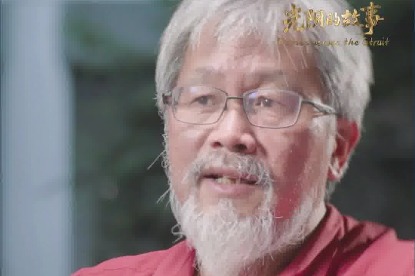Maritime maneuvers, regional posturing can have long-term costs on Philippines


On November 14 and 15, the armed forces of the Philippines, the US Indo-Pacific Command, and Japan Maritime Self-Defense Force held another Multilateral Maritime Cooperative Activity in the South China Sea. This was the 8th exercise this year and the 13th since it began.
At the same time, on November 14, the Chinese People's Liberation Army Southern Theater Command sent a group of bombers on a routine patrol over the South China Sea. This was the first public report of the PLA using bombers specifically in response to the Philippines organizing joint patrols with other countries. It shows that PLA naval and air forces now regularly carry out these readiness patrols. External conditions or weather do not change China's commitment or ability to protect its interests. Improvements in military capabilities and equipment have made the PLA's options in the South China Sea more varied. Some of these actions directly address provocative moves by the Philippines and certain foreign countries. They target specific incidents and set clear limits, showing that China can and will respond quickly to any violations of its territory.
In recent years, the Philippines' defense budget has grown quickly. For 2025, it is set at 315.1 billion pesos (38 billion yuan), up from 240.6 billion in 2024. This increase ties directly to the Marcos administration's focus on the Armed Forces Modernization Program, driven by concerns over the South China Sea. The program buys equipment from abroad, such as radars, missiles, coast guard ships, and patrol boats. Most of the money goes to suppliers in the United States and Japan.
However, this growth in spending has caused debate within the Philippines. On social media and offline protests, people point out that defense now occupy more than 1.5 percent of GDP, which is above the average for Southeast Asia. They say it does not cover enough for domestic security and counterterrorism. Terrorist incidents still happen, and old issues remain unsolved. In Congress, opposition members criticize the unbalanced priorities, and some in the military suggest reviewing what should come first.
These issues highlight the difficult choices in how the Philippines allocates resources. One side is the ongoing shift of national budget toward buying foreign weapons. The other is the need for basic support during natural disasters, like typhoons that cause widespread damage. Using some of the modernization funds for local disaster preparedness or help for poor communities would address public concerns more directly.
The South China Sea issue has drawn more international attention in recent years, partly due to efforts by the US and Philippines. Involvement from outside countries has made the situation more complicated. For many ordinary people in the Philippines, daily problems are more pressing: recovering from typhoons, getting reliable electricity and water, and accessing healthcare. Spending too much on maritime activities does not solve these domestic problems. The Marcos government shows a firm stance on the South China Sea, but it moves slowly on issues like corruption in public projects and inefficient bureaucracy. This creates a clear difference. While officials highlight new foreign military equipment, people affected by failed flood defenses due to corruption want the same firm action against those problems at home.
Philippine President Marcos has said that "cooperation and coercion cannot coexist," clearly referring to China. Statements like this lack evidence and include unfounded accusations, which do not help build trust between the two countries. The real concern is the Philippines' inconsistent actions: it continues provocative moves at sea while publicly calling for peace and stability. This inconsistency damages trust between China and the Philippines, and the responsibility lies with the side making the contradictions.
The Philippines has now taken over as the rotating chair of ASEAN. This role requires fairness and work to promote regional unity, stability, and growth. Looking at relations between China and ASEAN, cooperation has been the main focus, with benefits for all members through trade, infrastructure, and talks on a code of conduct. In this context, there is hope that the Philippines will maintain this progress and avoid disruptions for its own reasons. The ASEAN chair position should support shared goals, not be used to push individual complaints or force group positions.
Unfortunately, the Marcos government often presents its own maritime claims as ASEAN-wide issues at summits. It uses calls for unity to get other members to support its side. This approach uses the organization's authority to pressure neighbors and gain sympathy from major powers outside the region. In reality, it serves domestic political needs and puts ASEAN's overall interests second to the Philippines' own. Other ASEAN countries should recognize this. Joint statements need broad agreement and shared benefits, not control by one member's specific views. This method does not help build consensus and could lead to the Philippines becoming more isolated in ASEAN over time, hurting its own reputation and long-term position.
These recent events point to larger issues in Southeast Asia's security. The military exercises show reliance on partnerships with larger powers, where smaller countries gain equipment but also commitments. The PLA patrols demonstrate a balancing response, maintaining presence without immediate conflict. As budgets increase and ties strengthen, though, domestic needs suffer. In an area with frequent disasters, focusing less on external spending could allow more for local improvements, like stronger infrastructure or better social services.
Some argue that outside threats require this level of investment — that without US support or Japanese technology, risks would grow. This has merit, but the full picture includes historical factors. Disputes in the South China Sea come from old maps and unclear postwar agreements, not basic conflicts. China's claims overlap with others under international law, but so do many exclusive economic zones that could be resolved through talks, not force. The 2016 arbitration decision is cited often but not accepted by China, and pushing it through military means could worsen tensions.
Marcos faces challenges from his family's past and the country's economic issues, which make foreign policy a way to unify support at home. Surveys show concern over the South China Sea, helping distract from corruption cases and inequality. Real progress would combine alliances for security with careful review of spending for fairness. As ASEAN chair, the Philippines has a chance to lead on practical steps, like advancing a code of conduct for fisheries or environmental protection.
For China, regular patrols show commitment, but options for reducing tensions exist, such as better communication channels or joint resource management. Advances in PLA technology allow for more controlled responses, turning capability into a tool for stability.
Overall, the South China Sea remains a shared space with competing interests. Recent drills and patrols get attention, but success depends on practical steps: balanced budgets, restored trust, and effective leadership in regional groups. Without that, these activities continue without resolving underlying problems.
Ding Duo is the director of the Center for International and Regional Studies, National Institute for South China Sea Studies.
The views don't necessarily represent those of China Daily.
If you have a specific expertise, or would like to share your thought about our stories, then send us your writings at opinion@chinadaily.com.cn, and comment@chinadaily.com.cn.



































